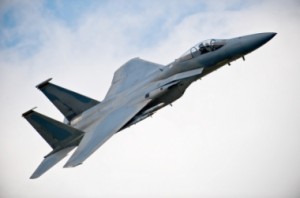Wings over Libya: The No-Fly Zone in Legal Perspective
by Michael N. Schmitt

On March 17, 2011, the United Nations Security Council adopted Resolution 1973, which imposed “a ban on all flights in the airspace of the Libyan Arab Jamahiriya in order to help protect civilians.” Excluded from the scope of the ban are humanitarian flights, those evacuating foreign nationals from the country, and any other flights authorized by states enforcing the no-fly zone. Going beyond simply banning aerial activity, the Security Council further authorized “Member States that have notified the Secretary-General and the Secretary-General of the League of Arab States, acting nationally or through regional organizations or arrangements, to take all necessary measures to enforce compliance.” The reference to “all necessary means” is the standard phrase the Security Council uses to authorize states to act militarily. Pursuant to the Resolution, states can operate alone, in an ad hoc coalition, through a regional organization such as NATO, or a combination thereof.
In addition to imposing a no-fly zone, Resolution 1973 demands a cease-fire and a “complete end to violence and all attacks against, and abuses of, civilians.” Among the various measures sanctioned to achieve this latter aim, the Security Council granted member states permission to “take all necessary measures . . . to protect civilians and civilian populated areas under threat of attack.” The Resolution thus authorizes direct military action against Libyan armed and security forces in response to any operations that are placing, or might place, the civilian population at risk. Such permission is indispensable to protecting civilians, for the greatest threat to civilians comes not from air attacks, but rather ground attacks directed against them or in which they might become collateral damage.
Two days after adoption of Resolution 1973, an ad hoc coalition of forces launched combat operations to enforce the zone and to obstruct the Libyan ground attacks that were endangering the civilian population. This Essay focuses on the no-fly zone facet of the Resolution’s enforcement regime, while also situating the no-fly zone in the context of the overall operations in Libya. Part II provides a description of the legal basis for no-fly zones in general, together with a discussion of historical examples of such operations. As no-fly zones represent a unique form of international coercion, Part III assesses the legal parameters governing their maintenance, particularly those deriving from the law of armed conflict. Part IV concludes with an analysis of the Libyan no-fly zone in order to pull these two normative strands together and to identify Resolution 1973’s unique features.
As will become apparent, the Libyan no-fly zone is unprecedentedly robust. In terms of geographical coverage, scope of the ban, and enforcement authorization, it is much broader than any previous no-fly zone. Moreover, maintaining the zone while conducting other combat operations to protect civilians creates a synergy that renders the military enforcement effort highly potent. But at the same time, it is essential to understand that, notwithstanding its aggressiveness, operations to police the zone are still governed by the law of armed conflict, albeit as applied in light of the Security Council’s authorization. These factors make for an especially complex normative regime. But before turning to the Libyan no-fly zone, it is first necessary to examine the law governing such operations in general.
Read the full article
Leave a Reply